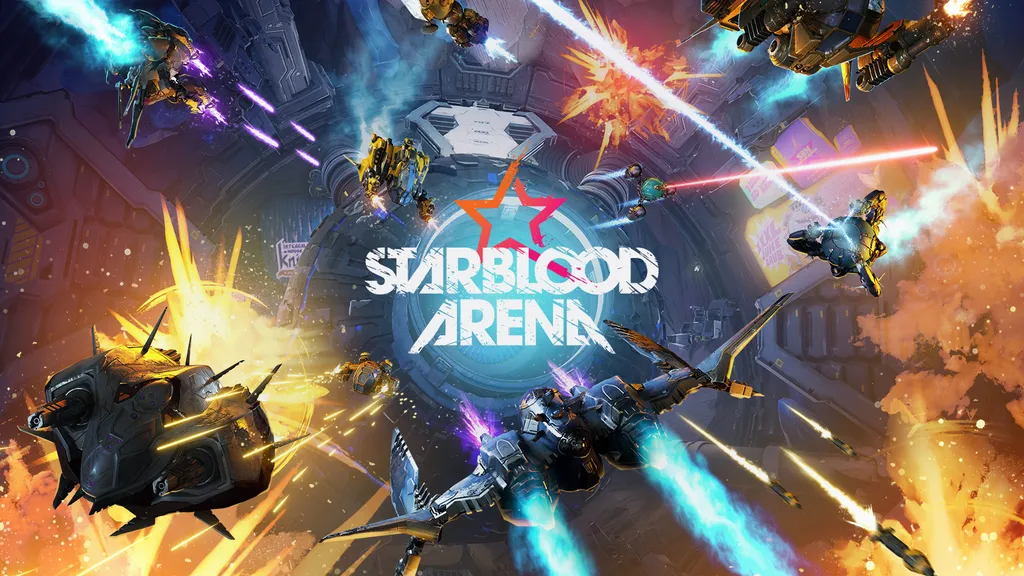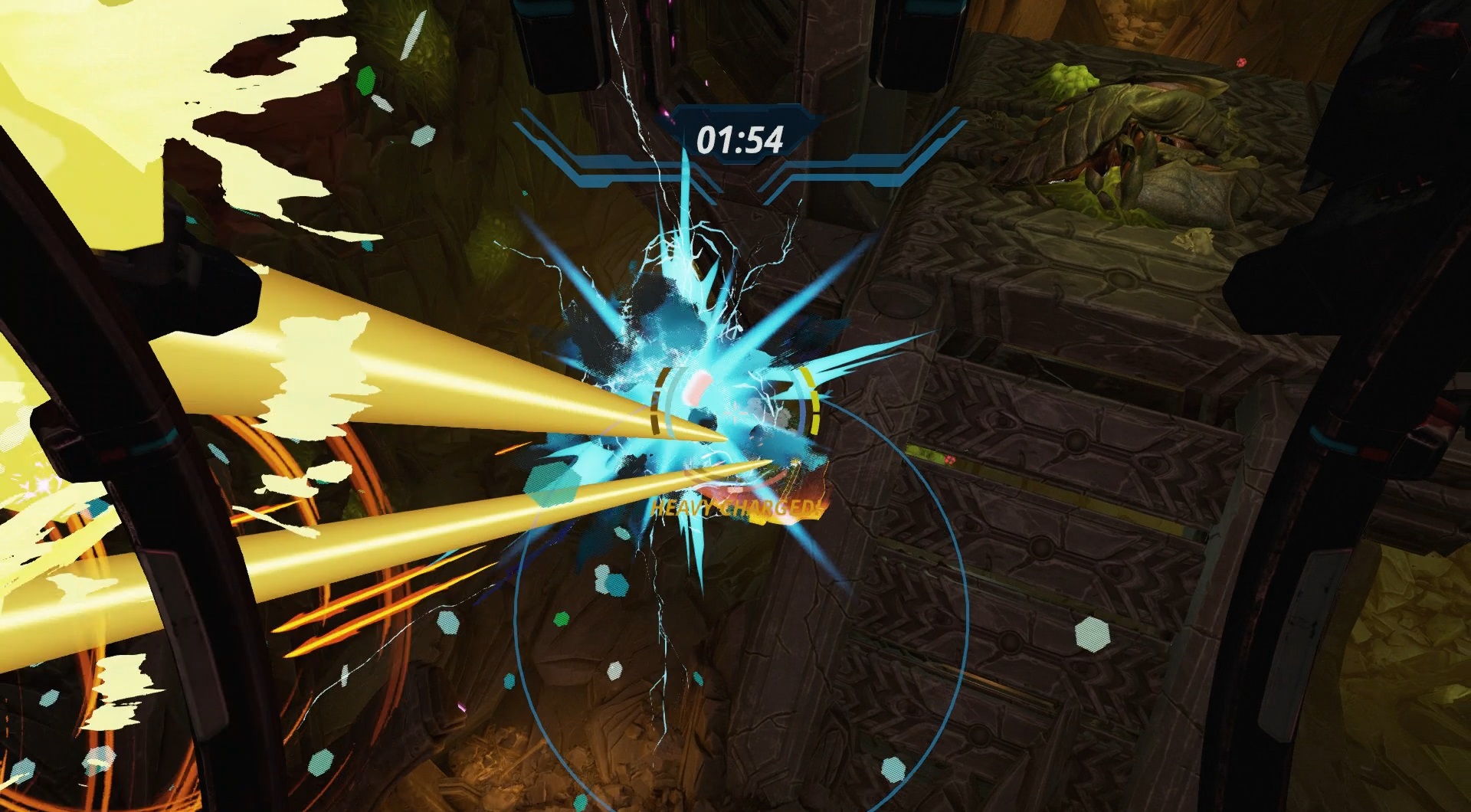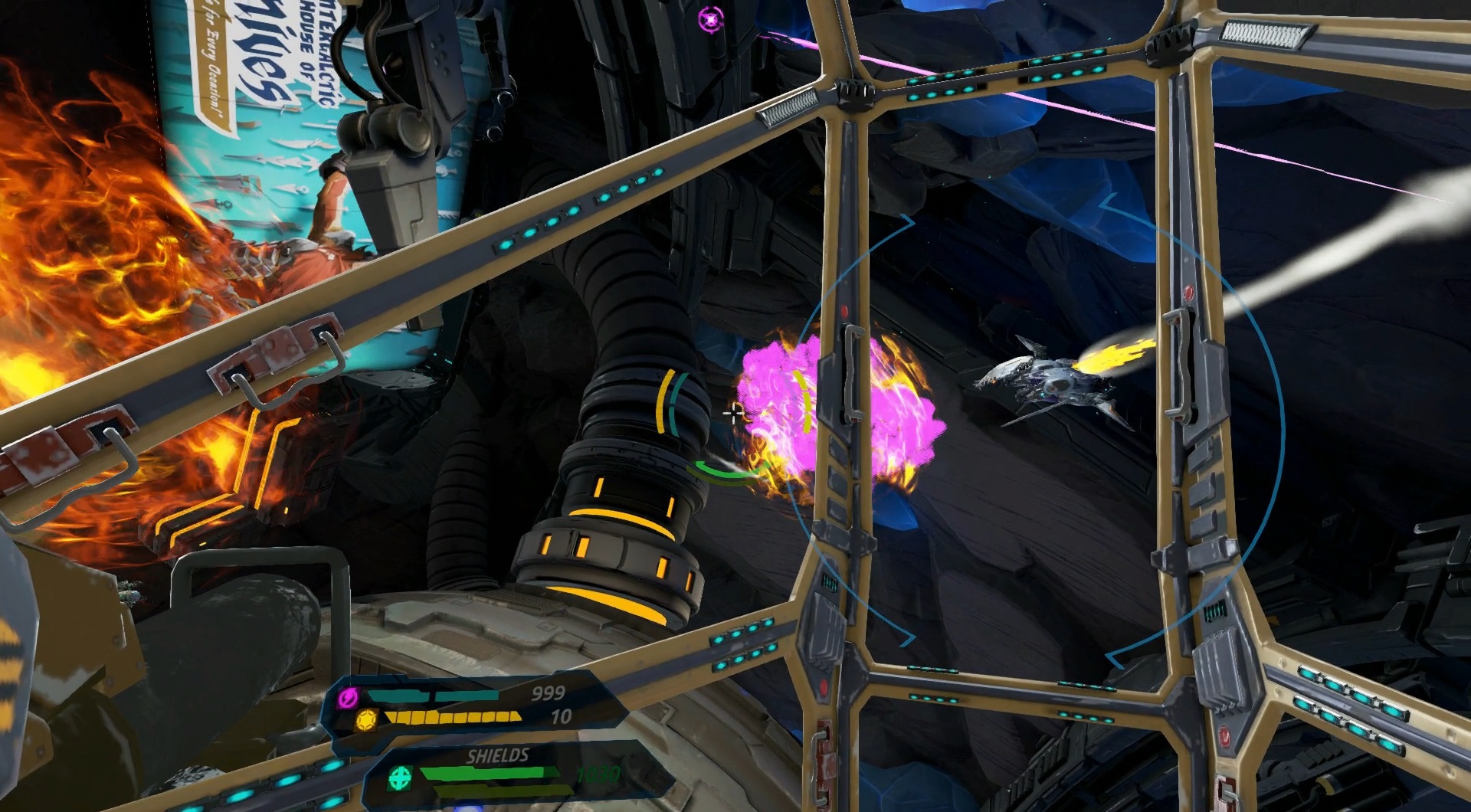Starblood Arena might look like it owes a debt to Descent, but it’s actually far more concerned with being VR’s very own Overwatch. Instead of a sprawling, maze-like campaign that pays tribute to the dormant six degrees of freedom (6DOF) shooter, WhiteMoon Dreams’ PlayStation VR (PSVR) exclusive creates class-based war zones that provide immediately satisfying, though occasional anarchic combat. If you’ve been starving for a successor to RIGS: Mechanized Combat League or EVE: Valkyrie, this might well do the trick. That is if you can find a match.
Starblood has players take part in ramshackle arena tournaments that wouldn’t look out of place in the Ratchet & Clank universe. Aiming is assigned to your head while piloting your ship is done with the DualShock 4. Being a 6DOF game, your ship doesn’t perpetually fly forward like it does in EVE, but instead allows you to move forwards, backwards, up, down or strafe left and right at any time. Swerving around the game’s tight, sometimes claustrophobic maps is as much of a joy as it is in similar games like Overload and Sublevel Zero, and it’s a great way to sidestep VR’s current locomotion issues.
But let’s get this out of the way; those looking for a solid single-player VR shooter in Starblood will come away disappointed. The game’s Burn Circuit mode barely passes for a campaign, offering a handful of missions — identical for each of its nine characters — that introduce you to three of the four modes you’ll encounter online on the exact same maps. WhiteMoon should be applauded for letting you play all of the game’s modes with some pretty challenging bot A.I., but this is still a multiplayer-only affair.
The cast of playable characters, a selection of humans, cyborgs and aliens that seemingly take inspiration from Monsters Inc. all the way up to Metal Gear Solid, are as diverse in their playstyles as they are their looks. There are the obvious mainstays: a standard all-round gunner named Buck brings full-frontal firepower that’s accessible for new players, while the mad scientist-looking Dregg provides a uniquely mobile take on the sniper.
More interesting are the creative classes that have you doing more than holding down the fire button. Apollonia has a shotgun that won’t prove too useful against speedy opponents, for example, but secondary time bombs and harpoons root the enemy to the spot, allowing you to get in close and take them out.
Like any class-based multiplayer game, balance is critical to the experience. The game’s already seen some tweaks, but I’ve found myself to be pretty effective with most of the cast, and those I faltered with I found were more demanding in areas I struggle with like low defensive capabilities that require you to keep your distance. Cyborg ninja-esque Elsa does seem a little overpowered with a secondary weapon that bites through the enemy’s health, but I ultimately settled with a Tik Tak Toh, three little Toy Story aliens that excel in close quarters and have the shields to sustain it.
No matter what your play style is, though, chances are you’re going to spend most of your time in multiplayer circling round an enemy, biting your lip as you throw everything you’ve got at them and hope that they die first. And you’ll have a lot to throw; every character has two primary weapons, a missile, a heavy weapon and a generic mine to leave floating around the map. It takes a fair bit of acclimatisation to remember to use everything in your arsenal, especially as locking onto an enemy for missile attacks takes two seconds that will an opponent will rarely stay in your cross hairs for.
In fact it can often be hard to tell how much of an impact you’re making on an enemy. While everyone has a clearly visible health bar, the game moves at such a pace with so much happening on screen that it’s often impossible to keep track of what’s incoming and what’s outgoing. Most of my deaths would come from out of nowhere and that could be frustrating. You can limit the chaos by going with team deathmatch over the unwieldy free-for-all mode, and a Quidditch-like take on capture the flag also provides a little more structure.
But the real thrills of Starblood are in the chase. Coming under fire and ducking into a rocky cavern in a map set inside a cave has a wonderful fluidity to it, as does weaving around pillars and corners and leaving a bomb behind for anyone on your trail. It’s in these moments that you feel like an ace pilot, and it’s much more preferable to the many moments where everyone meets in the middle of the map to unload their ammunition, and the winner likely the one lucky enough not to be noticed. Starblood can often feel like a crapshoot in that respect, and I suspect many players will be alienated by that while the pros literally run circles around them.
Thankfully, competitive multiplayer isn’t all that’s here. Starblood’s co-op offerings are frankly my favorite part of the game (though admittedly not worth the $39.99 price point alone). You and up to three friends can defend three bases from waves of increasingly difficult enemies that you won’t find in any other mode. There’s a sense of structure here that I haven’t been able to pin down in the game’s main modes yet; the coordination it took between me and a friend to survive as long as possible had me holding my breath as I quickly boosted out of frag fests and then seconds later heroically swooped back in with a charged shield to clear our the scraps and revive my ally. It felt great.
There’s a lot to like here, if you’re willing to devote time to get used to it. But what’s really holding Starblood back is its server issues. We’ve had real troubles trying to find a game, so much so that it wasn’t until a week later that we’d felt like we’d played enough to officially rate it. WhiteMoon says its working on updates, but we can’t help but question how many people are really playing Starblood, especially with its hefty price tag. It’s a chicken and egg problem, but it’s difficult to recommend a product that might not ever grow to get the player base it needs.
Starblood Arena isn’t a profound expression of the power of VR, but it’s hard not to appreciate a rock solid shooter that will provide hours of multiplayer battles for those willing to put the time in. Ultimately it’s a little too niche to become the definitive multiplayer PSVR game, and the struggles to get into matches aren’t going to please people that threw down $39.99 to play it. But if you’ve got the patience the game will regularly ask of you, you won’t come away disappointed.




























